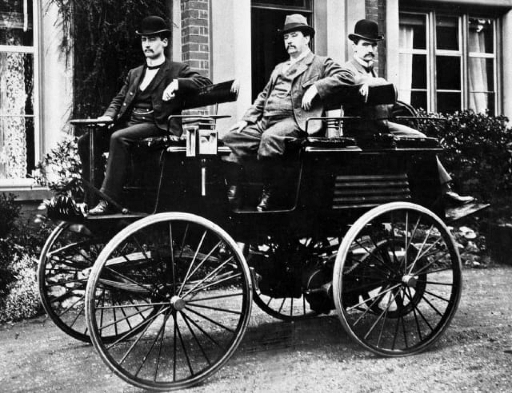It is impossible to imagine the streets these days without electric cars, but did you know that the history of these 'modern' vehicles goes back to 1888? In this article, we dive into the origins of the electric car and make a jump to the current situation in Belgium and the future of electric driving. We also discuss the challenges associated with the growing demand for electric charging and the solutions already under development.
The birth of the electric car

The history of the electric car began in 1888 when German Andreas Flocken built the first electric car called 'Flocken Elektrowagen'. By the year 1900, there were relatively many cars running on electricity and 1912 was the peak year with sales of 4,000 electric cars. However, by the end of the 19th century, the fuel engine was getting better and better and there was an economic crisis that made electric motor batteries too expensive for manufacturers. To keep up with demand and keep costs down, it was more beneficial to use a petrol engine.
Revival of the electric car
In Belgium, on 1 March 2023, the 100,000th electric car was registered! It is estimated that around 125,000 EVs would be driving around on Belgian roads by 2025. The charging infrastructure has also advanced rapidly in recent years, currently there are more than 24,000 (semi)-public charging points in Belgium. The Flemish government wants charging points to increase by more than 45% in the next five years.
Innovatie van elektrische auto's gaat nog steeds door en er zijn continu Electric car innovation continues and new technologies are constantly being developed, such as vehicle-to-grid. This involves bidirectional charging stations that allow the battery of the electric car to serve to power a building or other electric devices. Also, all EVs have an option called 'smart charging', which, by the way, is also in your smartphone and laptop. With this option, the battery automatically knows when to stop charging; reducing the risk of overheating and extending battery life.
The government is also playing an important role in the transition to eMobility. For instance, the European Union has decided to ban the sale of fuel cars from 2035. In addition, more and morelow-emission zonesintroduced in busy cities and there are a host of fiscal benefitsfor the purchase of electric cars and charging stations. The phasing out of tax breaks for fossil-fuel company cars also plays a very big role. Finally, a complete ban on the sale of fossil fuel cars will also come into force in the EU in 2035. This makes future-proofing companies' fleets an interesting investment.
Can Belgium handle the transition to eMobility?

A key question is whether the energy grid can handle the transition to electric cars. Fluvius reveals that the capacity of the Flemish grid is strong enough to charge +- 1 million electric cars by 2030 (source: HLN). But what is important to keep in mind is that it is not about how much energy is needed but how to distribute that energy in a smart way. Fluvius is already currently working on investment plans to increase grid capacity.
What is so convenient about electric vehicles is that they are in constant communication with charging stations and energy suppliers. This brings a lot of advantage for monitoring grid balancing and, of course, it won't be the case that everyone is charging their EVs at the same time so that usage is automatically distributed across the grid.
Investment in green energy such as wind and solar power should continue to ensure that there is enough energy to supply EVs with enough electricity. We made a small calculation to show how much power would be needed to make Belgium fully electric.
There are currently 6 million passenger cars on the track, with which the Belgian drives an average of 15,000 km a year. This works out to a driving total of 92 billion kilometres a year. If we all replace passenger cars with a Tesla Model 3, which has a consumption of 15 kWh per 100 kilometres, then we arrive at a 14 billion kWh consumed in one year.
So with 2000 wind turbines (1 wind turbine generates about 6.5 million kWh per year), we can provide enough power for all passenger cars in Belgium. Especially if we take into account that an EV is charged for only 1 to 2 hours per day on average. Other energy sources such as solar and nuclear power plants ensure that the chances of us not having enough power capacity to charge electric cars are very small. With the right investments and expansions of green energy, the future of eMobility is assured!
Our calculations show that the Flemish distribution network can handle one million electric cars by 2030.
In short, the electric car has been around for a long time but has recently undergone a real transformation. The EVs of the future will have better and more fuel-efficient batteries. Charging and maintenance infrastructure will also improve. With this, the government and companies can take a big step forward by electrifying their fleets. The transition to eMobility is happening fast, but there is no need to panic! New innovations in energy management are constantly happening and the fuel efficiency of electric vehicles will also only improve in the future. Belgium is ready for the transition to electric driving.
Sources: Fluvius, Statbel, gaslicht.com